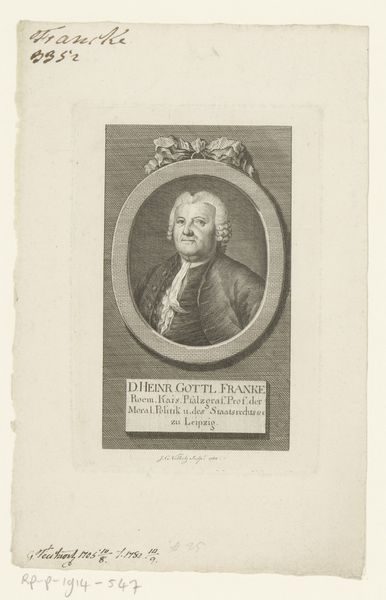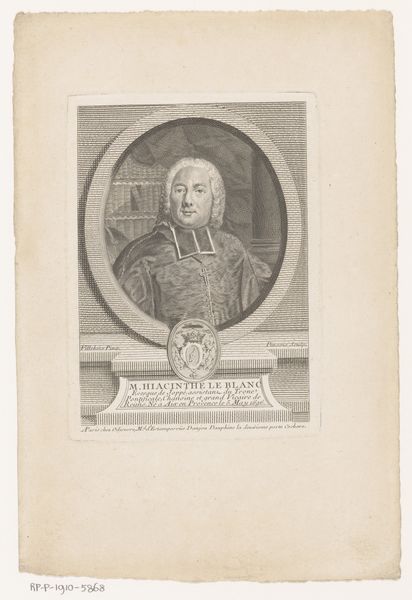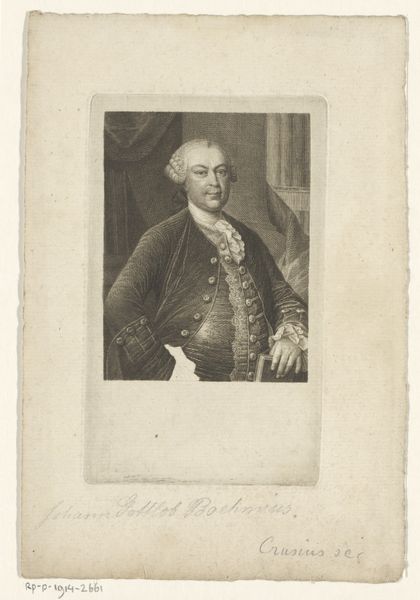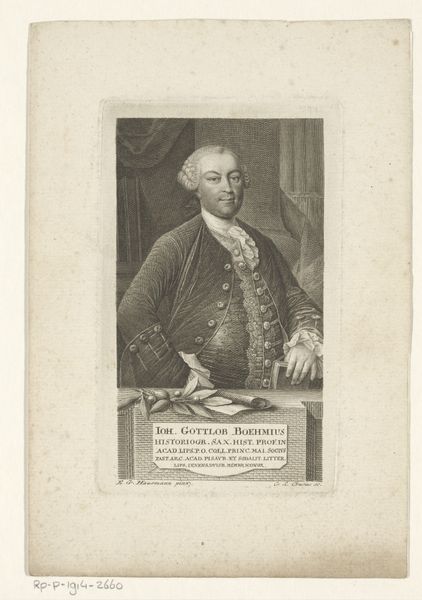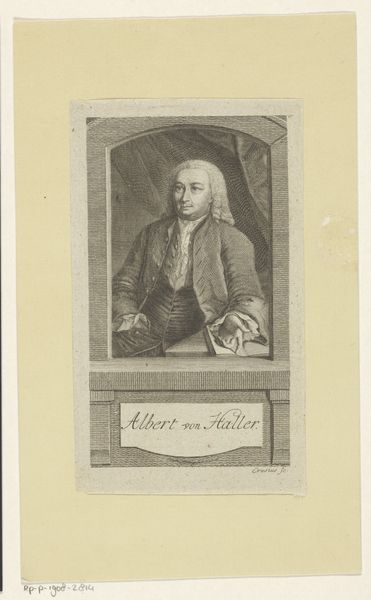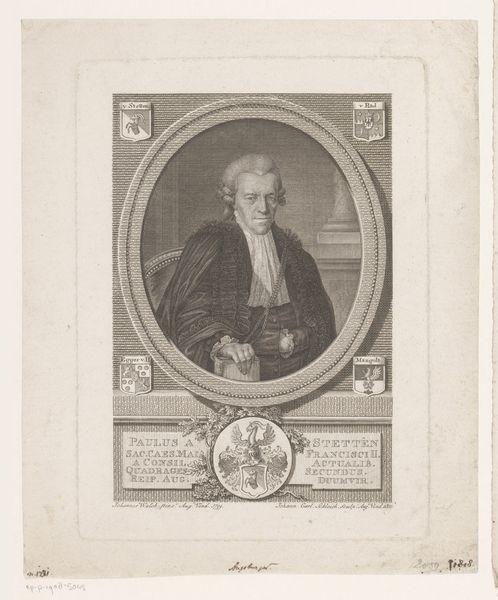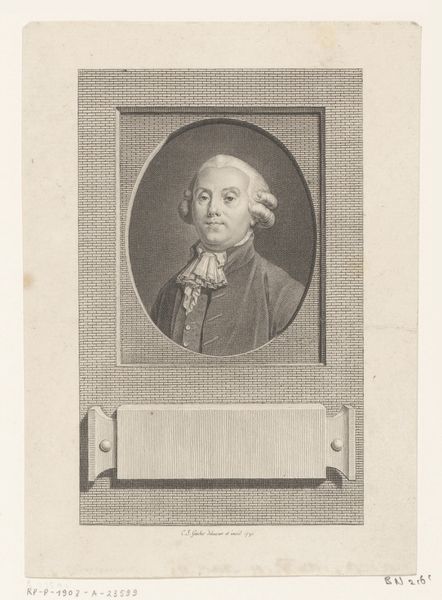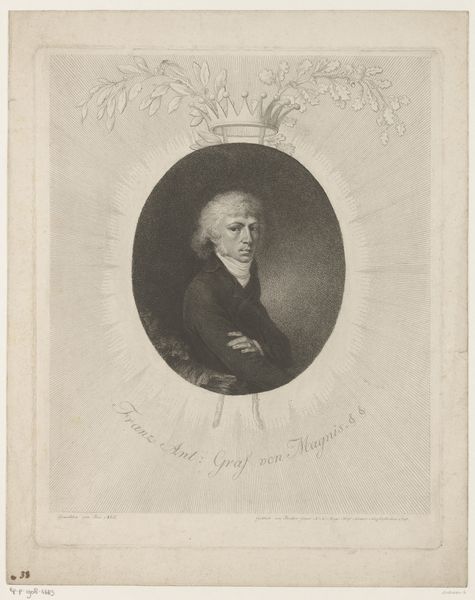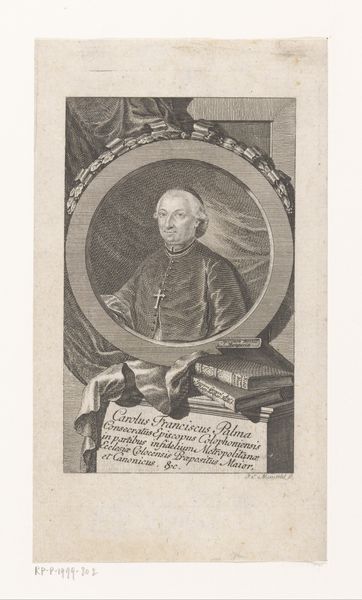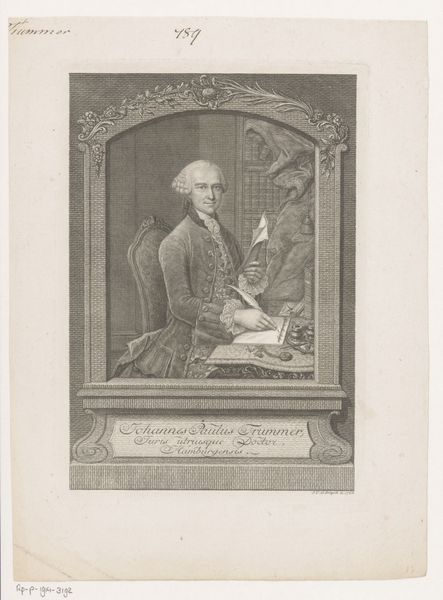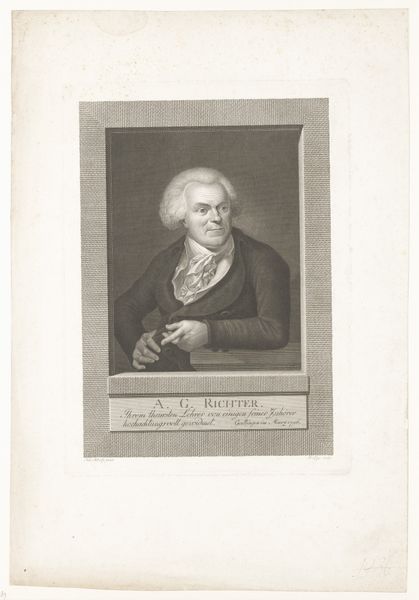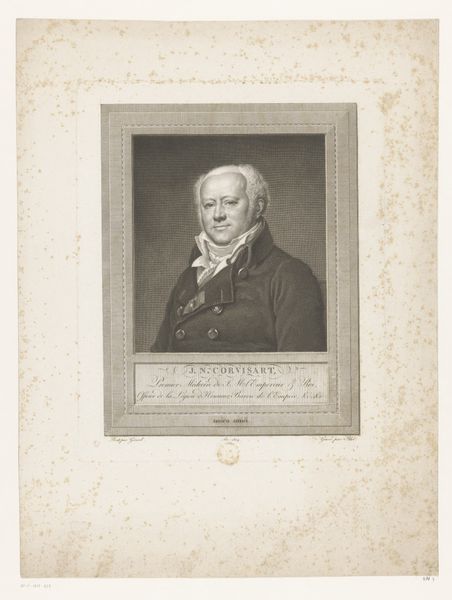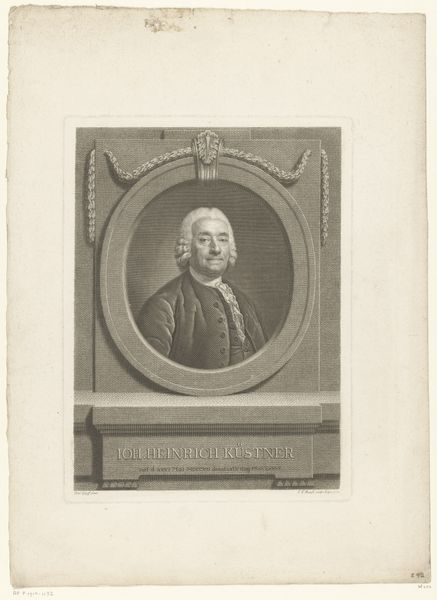
Dimensions: height 491 mm, width 340 mm
Copyright: Rijks Museum: Open Domain
Curator: The subject of this portrait exudes such an air of composed affluence! Editor: Indeed. We’re looking at a piece titled "Portret van Daniel von Buchs," created between 1776 and 1781 by Johann Christian Gottfried Fritzsch. It's an engraving, currently held here at the Rijksmuseum. Curator: The meticulous detail of the engraving – look at the texture on his coat, the way the light seems to catch the edges of those books. Beyond representing an individual, the very medium feels tied to conveying enlightenment ideals. Editor: Absolutely. Engravings like this served an important social function in the 18th century. This was how likenesses were circulated, how a certain class projected and reinforced its image of power and learning. Notice how von Buchs is positioned in front of that window. Curator: He gazes directly outward to an unseen audience as he calmly rests a hand upon a globe. It’s quite deliberate, isn't it? Editor: Without question. The books in the background suggest intellectual pursuits, while the landscape implies dominion over the land. This image is making very pointed statements about his identity. What I find compelling, from an art historical standpoint, is how Fritzsch uses established visual tropes to position his subject within a particular social hierarchy. Curator: And there’s the symbolic weight of the globe he rests his hand on - a subtle declaration of influence extending beyond his immediate surroundings. Do you find something inherently propagandistic here, then? Or rather an idealized image tailored for cultural endurance? Editor: It’s walking a line, isn’t it? The artist isn’t simply rendering a face; he’s constructing a carefully considered representation of social standing in a period defined by rigid social norms and a dawning sense of bourgeois ascendance. The image reflects, as much as constructs, a historical reality. Curator: Looking closer now, past all this staging of image-making, the calm self-assurance feels more real; not entirely contrived in light of everything else. It suggests something about Von Buch’s disposition. It’s a portrait intended to project something far beyond simple personal likeness, and in that sense, it transcends the immediate individual. Editor: A fine observation to end on: it's both an intimate portrayal and a carefully crafted piece of period propaganda, revealing, on closer viewing, the cultural ambitions of an era on the cusp of revolution.
Comments
No comments
Be the first to comment and join the conversation on the ultimate creative platform.
